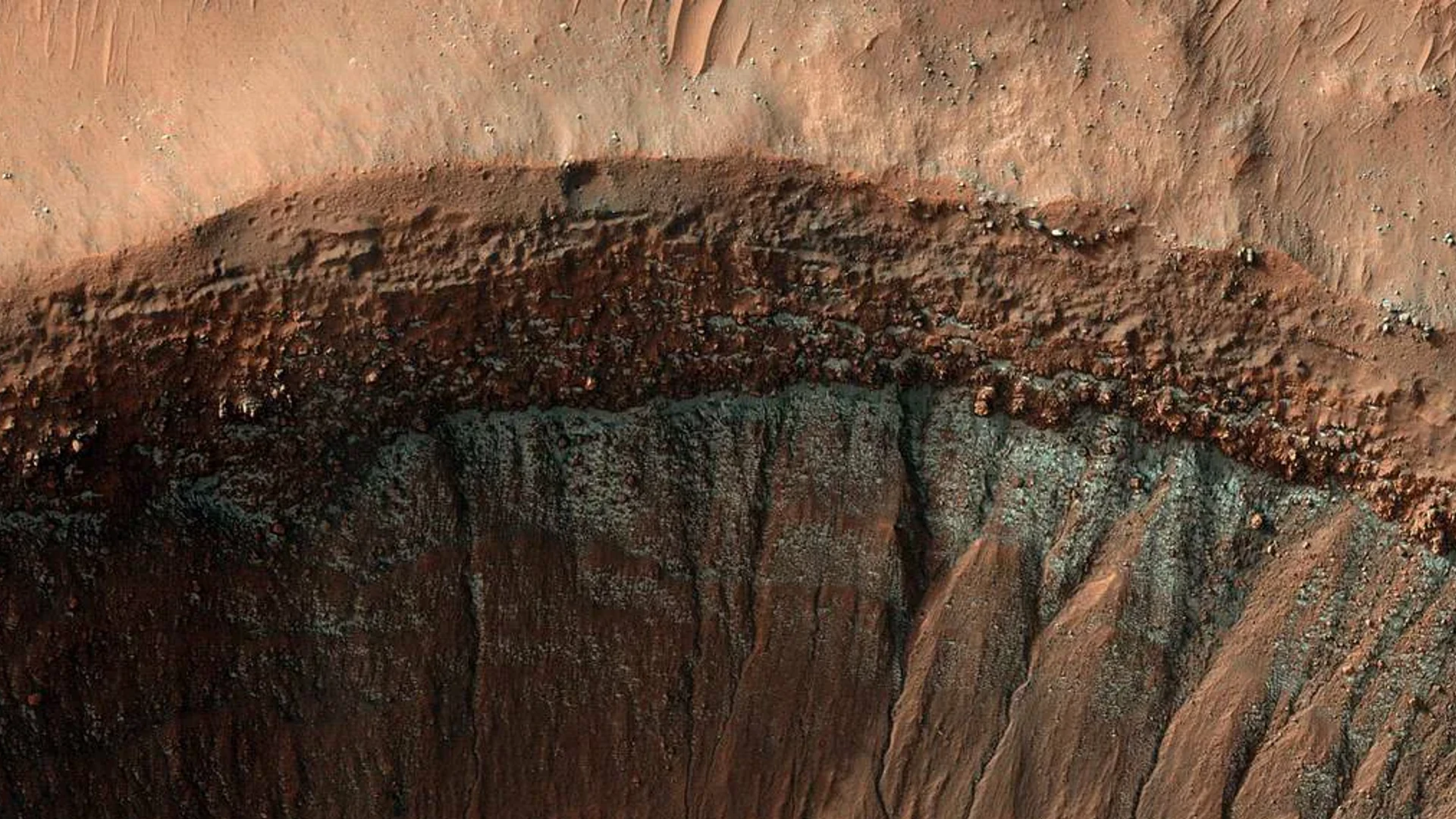A NASA satellite spotted dry ice and gullies inside a Martian crater from over 100 miles above the surface.
Mars gets quite cold during its winter – NASA’s rovers endure temperatures as low as -140 degrees Fahrenheit, but it gets much colder at the poles – allowing carbon dioxide in the atmosphere to condense into dry ice.
Winter CO2 frost usually occurs closer to the equator, where it’s usually too “warm” for dry ice to form. Nonetheless, frost has formed in areas of the crater that don’t receive as much sunlight.
However, that’s not all. Also visible is another curious sight on Mars: gullies. These are channels or trenches cut into the surface. The CO2 frost can act like a fluid and flow in, or form, gullies.
Cold as (dry) ice: Mars Reconnaissance Orbiter glimpsed patches of carbon dioxide frost in the shadows beneath a crater rim. Details: https://t.co/hu3vXdTnow pic.twitter.com/65fDsGnu9c
— NASA Mars (@NASAMars) April 5, 2022
Mars also contains some water ice. The planet’s frigid Korolev crater is filled with ice year-round.
Planetary scientists have found evidence that water once flowed on Mars, perhaps as “recently” as 2 billion years ago. And perhaps some 4 billion years ago, it’s possible Mars was even a largely blue world, with enough water to cover large swathes of the planet.
Currently, the surface of Earth is a harsh, dusty desert. NASA’s robotic rovers are now searching the arid world for signs of primitive life from the past.
